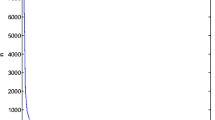Abstract
In quantum weak oblivious transfer, Alice sends Bob two bits and Bob can learn one of the bits at his choice. It was found that the security of such a protocol is bounded by \(2P_{\mathrm{Alice}}^{*}+P_{\mathrm{Bob}}^{*}\ge 2\), where \( P_{\mathrm{Alice}}^{*}\) is the probability with which Alice can guess Bob’s choice, and \(P_{\mathrm{Bob}}^{*}\) is the probability with which Bob can guess both of Alice’s bits given that he learns one of the bits with certainty. Here we propose a protocol and show that as long as Alice is restricted to individual measurements, then both \(P_{\mathrm{Alice}}^{*}\) and \(P_{\mathrm{Bob}}^{*}\) can be made arbitrarily close to \(1/2\), so that maximal violation of the security bound can be reached. Even with some limited collective attacks, the security bound can still be violated. Therefore, although our protocol still cannot break the bound in principle when Alice has unlimited cheating power, it is sufficient for achieving secure quantum weak oblivious transfer in practice.
Similar content being viewed by others
Explore related subjects
Discover the latest articles, news and stories from top researchers in related subjects.References
Rabin, M.O.: How to Exchange Secrets by Oblivious Transfer. Technical Report TR-81. Aiken Computation Laboratory, Harvard University (1981). http://eprint.iacr.org/2005/187
Even, S., Goldreich, O., Lempel, A.: A randomized protocol for signing contracts. In: Chaum, D., Rivest, R.L., Sherman, A.T. (eds.) Advances in Cryptology: Proceedings of the Crypto ’82, p. 205. Plenum, New York (1982)
Kilian, J.: Founding crytpography on oblivious transfer. In: Proceedings of the 1988 ACM Annual Symposium on Theory of Computing, p. 20. ACM, New York (1988)
Colbeck, R.: Impossibility of secure two-party classical computation. Phys. Rev. A 76, 062308 (2007)
Salvail, L., Schaffner, C., Sotakova, M.: On the Power of Two-Party Quantum Cryptography. e-print. arXiv:0902.4036 (2009)
Salvail, L., Sotakova, M.: Two-Party Quantum Protocols Do Not Compose Securely Against Honest-But-Curious Adversaries. e-print. arXiv:0906.1671 (2009)
Colbeck, R.: Quantum and Relativistic Protocols for Secure Multi-Party Computation. e-print. arXiv:0911.3814 (2009)
Chailloux, A., Kerenidis, I., Sikora, J.: Lower bounds for quantum oblivious transfer. Quantum Inf. Comput. 13, 158 (2013)
Chailloux, A., Gutoski, G., Sikora, J.: Optimal Bounds for Quantum Weak Oblivious Transfer. e-print. arXiv:1310.3262 (2013)
Bennett, C.H., Brassard, G., Crépeau, C., Skubiszewska, M.-H.: Practical quantum oblivious transfer. In: Feigenbaum, J. (ed.) Advances in Cryptology: CRYPTO ’91, Lecture Notes in Computer Science, vol. 576, p. 351. Springer, Berlin (1992)
Mayers, D., Salvail, L.: Quantum oblivious transfer is secure against all individual measurements. In: Proceedings of the Third Workshop on Physics and Computation—PhysComp ’94, p. 69. IEEE Computer Society Press, Dallas (1994)
Mayers, D.: Unconditionally secure quantum bit commitment is impossible. Phys. Rev. Lett. 78, 3414 (1997)
Lo, H.-K., Chau, H.F.: Is quantum bit commitment really possible? Phys. Rev. Lett. 78, 3410 (1997)
Crépeau, C.: Equivalence between two flavours of oblivious transfers abstract. In: Pomerance, C. (ed.) Advances in Cryptology: CRYPTO ’87, Lecture Notes in Computer Science, vol. 293, p. 350. Springer, Berlin (1988)
He, G.P.: Quantum key distribution based on orthogonal states allows secure quantum bit commitment. J. Phys. A Math. Theor. 44, 445305 (2011)
He, G.P., Wang, Z.D.: Oblivious transfer using quantum entanglement. Phys. Rev. A 73, 012331 (2006)
Shimizu, K., Imoto, N.: Communication channels analogous to one out of two oblivious transfers based on quantum uncertainty. Phys. Rev. A 66, 052316 (2002)
Brassard, G., Crépeau, C., Jozsa, R., Langlois, D.: A quantum bit commitment scheme provably unbreakable by both parties. In: Proceedings of the 34th Annual IEEE Symposium on Foundations of Computer Science, p. 362. IEEE, Los Alamitos (1993)
Author information
Authors and Affiliations
Corresponding author
Additional information
This work was supported in part by the NSF of Guangdong Province.
Rights and permissions
About this article
Cite this article
He, G.P. Secure quantum weak oblivious transfer against individual measurements. Quantum Inf Process 14, 2153–2170 (2015). https://doi.org/10.1007/s11128-015-0970-8
Received:
Accepted:
Published:
Issue Date:
DOI: https://doi.org/10.1007/s11128-015-0970-8




